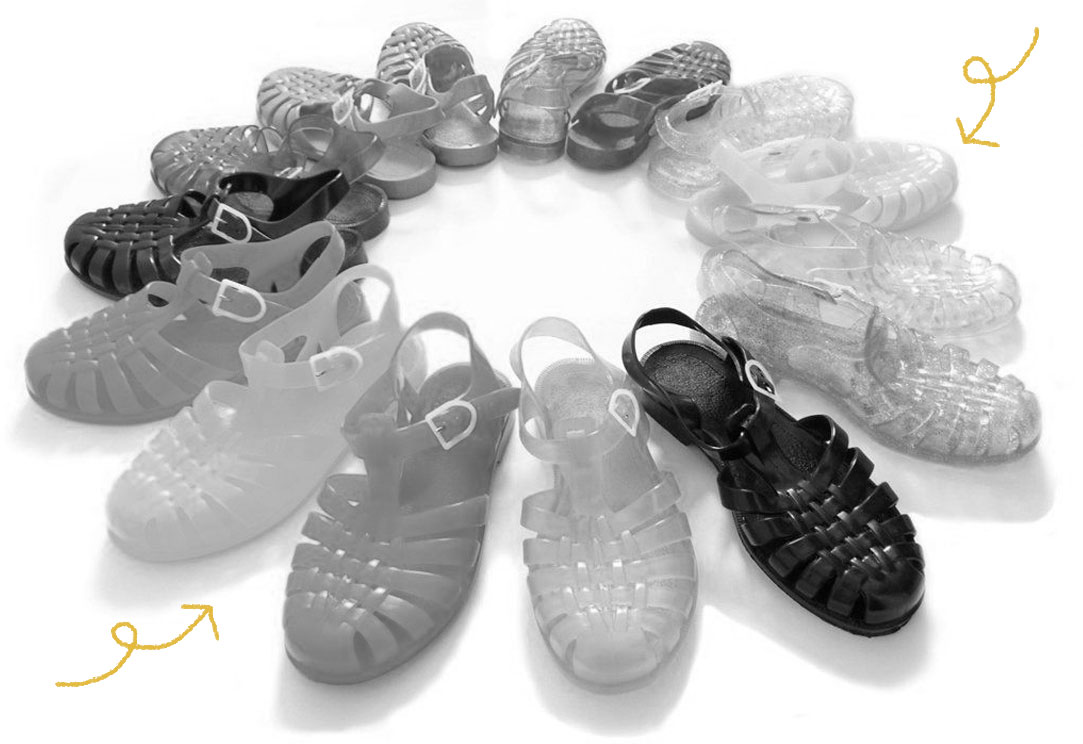Jelly shoes, or “jellies,” are thought to have originated sometime in the late 1950s or early 1960s when plastic became extremely common. However, it wasn’t until the 1980s that the jelly shoe boom began. One version of the shoe’s origin story claims that a former bank president named Preston Haag Sr. discovered bright, cheap shoes being worn by women in Brazil and introduced his own version at the 1982 World’s Fair in Knoxville, Tennessee. A year later, a Bloomingdale’s buyer ordered 2,400 pairs in nine different styles, and shortly after, Haag teamed up with four designers — Dorthee Bis, Fiorucci, Thierry Mugler, and Jean-Paul Gaultier — to create new styles every six months to stay ahead of competitors. An alternative origin story holds that shoe manufacturer Bert Geller saw Greek hotel workers wearing plastic shoes and then began manufacturing his own; he sold his jellies at Saks Fifth Avenue and Macy’s. Both Haag and Geller intended their jelly shoes to be high-end items for members of high society to garden in, but the shoes didn’t catch on with the cohort as they expected, and soon sank in price. Ultimately, the cheap, brightly colored shoes caught on among children and teens in the 1980s instead. They fell out of fashion favor in late 1990s and early 2000s, but jelly shoes have made something of a fashion comeback in recent years as high-end designers and affordable retailers alike have begun to sell them again.

Your go-to guide for weird history facts
Subscribe to the FREE daily email that makes learning about history fun.


